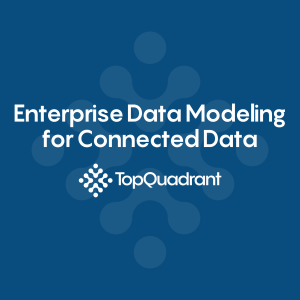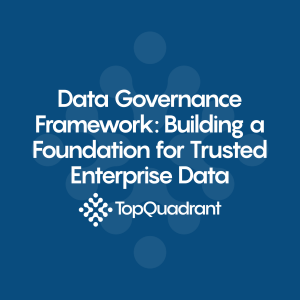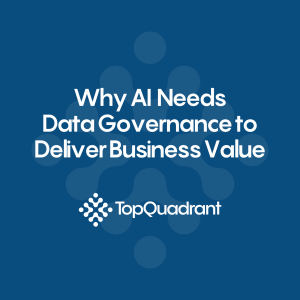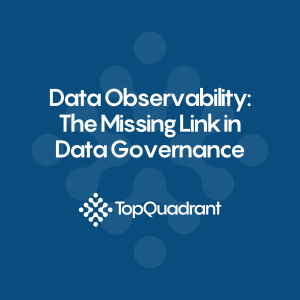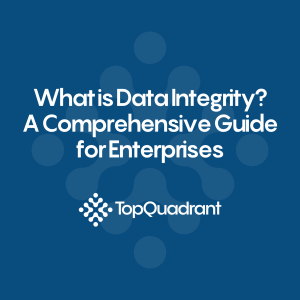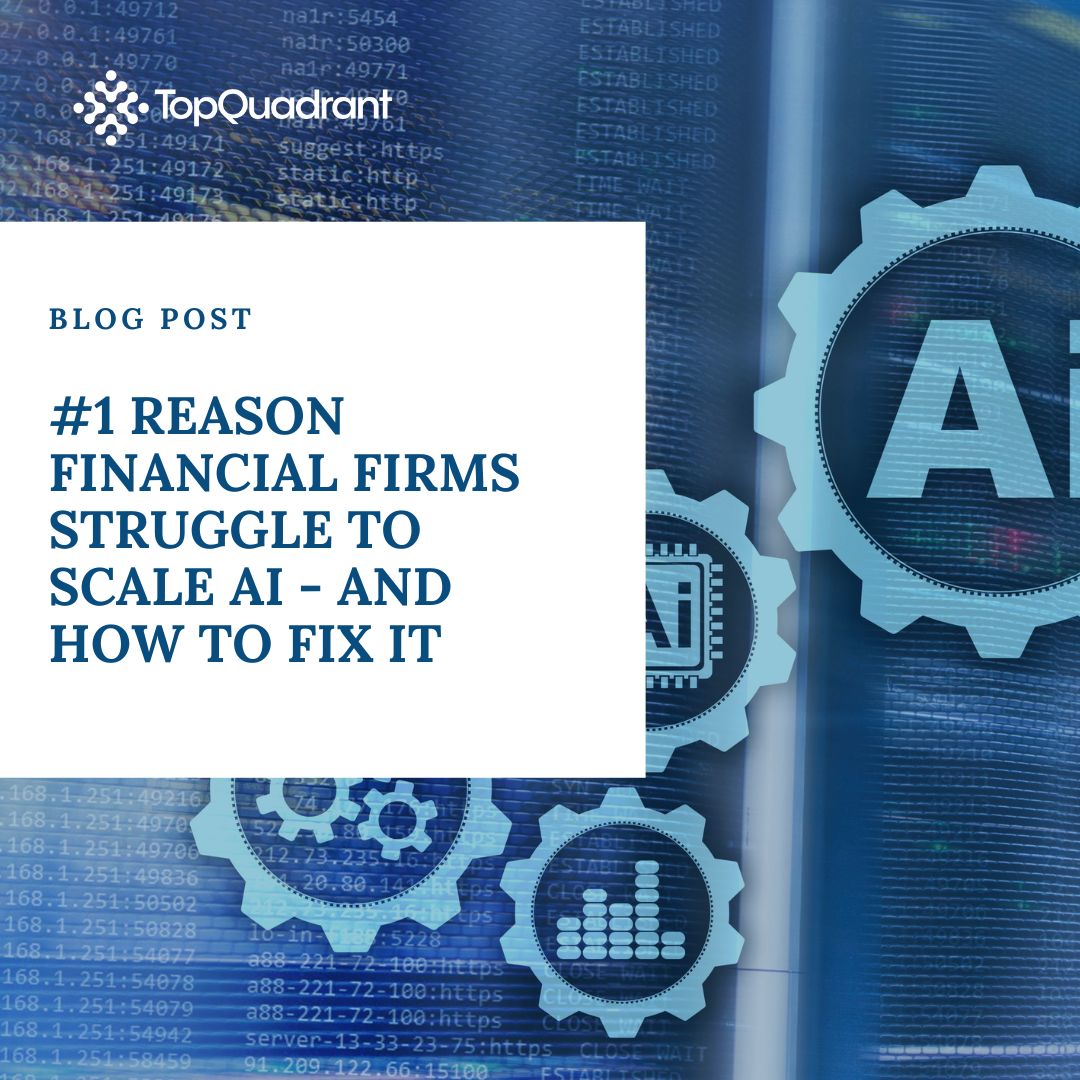Blog | What Is an AI Data Governance Framework? Principles, Best Practices, and Examples
Artificial intelligence is reshaping how enterprises make decisions, serve customers, and automate operations. Yet as AI systems become more deeply embedded into products and processes, organizations face a critical question: how do we govern the data that fuels these systems in a way that is responsible, explainable, and compliant?
This is where an AI data governance framework becomes essential. It provides the structure, policies, technologies, and workflows that ensure AI systems use data safely, transparently, and in alignment with business and regulatory requirements. While enterprises have invested in traditional data governance programs for years, the rise of AI introduces new challenges that require a more integrated and intelligent approach.
This guide explains what an AI data governance framework is, how it differs from traditional governance, the principles that define it, and how leading organizations are using knowledge graphs, metadata management, and semantic modeling to build AI that is both powerful and trustworthy.
What Is an AI Data Governance Framework?
An AI data governance framework is a structured set of policies, technologies, processes, and responsibilities used to manage the data that trains, powers, and is produced by AI systems. It ensures AI models operate with reliable data, follow ethical and legal standards, and remain explainable throughout their lifecycle.
In simpler terms, it is the governance layer that connects:
- the data that AI consumes
- the metadata and context that describe that data
- the AI models that use or create data
- the policies and controls that manage risk, security, and quality
This framework spans the entire AI lifecycle. It governs data sourcing, preparation, training, deployment, monitoring, and retirement.
Traditional data governance frameworks focus on the accuracy, lineage, ownership, and security of data assets. An AI data governance framework extends this by governing model behavior, explainability, ethical considerations, and the unique risks introduced by AI-generated content.
Enterprises use this framework to answer questions such as:
- Where did the data in this model come from
- Why did the model make this prediction
- Is the data biased or incomplete
- Does this AI decision comply with regulations
- Can we explain and audit the outcome
Organizations that cannot answer these questions struggle to trust AI systems or scale them across sensitive business domains.
Why AI Requires a Different Type of Governance
Traditional data governance frameworks were not built for the dynamic and iterative nature of AI systems. They focused on static datasets, structured databases, and compliance rules that evolved slowly. AI disrupts all three.
AI models create new forms of data
Unlike traditional analytics, AI models generate new data such as embeddings, classifications, synthetic content, predictions, and recommendations. These outputs must be governed just like the data that feeds them.
AI increases the importance of lineage
AI decisions depend on how data evolved through feature engineering, training pipelines, tuning, and model updates. Traceability is essential for auditing and compliance, especially in regulated industries.
AI systems evolve over time
Models drift as user behavior changes. Without monitoring and governance, AI can become inaccurate or biased, creating operational and regulatory risks.
Regulations have expanded governance expectations
The EU AI Act, GDPR, HIPAA, and the NIST AI Risk Management Framework require traceability, documentation, risk mitigation, and explainability for AI systems. Enterprises cannot meet these expectations with manual processes or committee-driven workflows.
Governance must be embedded in data
AI systems process data at machine speed, which means governance must be machine-readable, machine-executable, and automated. This is impossible without strong metadata management and semantic modeling.
These differences explain why companies are replacing committee-driven governance processes with technology-driven governance frameworks that enforce compliance, quality, and transparency at scale.
The Key Pillars of an AI Data Governance Framework
While every organization tailors its framework to its industry and risk profile, most enterprise AI data governance frameworks share a common set of pillars. These pillars ensure AI is transparent, safe, and effective across its lifecycle.
Below is a simple table summarizing the most important pillars.
| Pillar | Purpose |
| Data Integrity | Ensures that training and inference data is accurate, complete, consistent, and governed throughout its lifecycle |
| Metadata and Lineage | Captures context, provenance, and audit trails for all AI data and model artifacts |
| Explainability | Allows stakeholders to understand how and why AI systems make decisions |
| Compliance and Ethics | Aligns AI behavior with legal, regulatory, and ethical standards |
| Security and Privacy | Protects data used in AI models, especially personal or regulated data |
| Accountability and Ownership | Defines who is responsible for data quality, model risk, controls, and monitoring |
| Automation and Policy Enforcement | Uses technology to implement governance at scale without manual bottlenecks |
These pillars form the foundation for responsible AI development and help organizations build trust in their data and models.
Pillar 1: Data Integrity
Data integrity is the starting point for any governance framework. AI models cannot perform reliably if the underlying data is fragmented, inconsistent, or unverified. Data integrity processes must cover:
- Data quality rules
- Validations and constraints
- Standardized business terms and taxonomies
- Reference data consistency
- Version control and lifecycle management
Without this, AI systems are essentially making decisions on sand.
Pillar 2: Metadata, Context, and Lineage
Metadata describes the meaning, structure, relationships, and lifecycle of data. Lineage captures how data moves and changes. For AI, metadata and lineage play an even more critical role. They enable:
- Model explainability
- Compliance audits
- Root cause analysis
- Reproducibility of model outcomes
- Policy enforcement
Metadata management is the backbone of an AI data governance framework because it creates the transparency that regulators, business stakeholders, and data scientists require.
Learn more about metadata management in TopQuadrant’s guide: Metadata Management Tools for Governance and AI Readiness
Pillar 3: Explainability
Explainability is essential for trust and accountability. It helps stakeholders understand how AI systems interpret data and produce outputs. This includes:
- Feature importance
- Model documentation
- Decision traceability
- Semantic clarity through ontologies
Knowledge graphs and ontologies are powerful tools for explainability because they reveal how concepts relate to one another and how models interpret those relationships.
Pillar 4: Compliance and Ethics
Regulations such as the EU AI Act require:
- Documentation of training data
- Traceable lineage
- Human oversight
- Bias assessment
- Risk mitigations
- Impact assessments
AI data governance frameworks provide the structure to meet these requirements consistently and efficiently. They also embed organizational ethics policies, including fairness, inclusivity, accuracy, and transparency.
Pillar 5: Security and Privacy
AI models often process sensitive information. Security controls must protect:
- Training datasets
- Inference pipelines
- Stored model artifacts
- Embedded personal information
- AI-generated content
Privacy policies must ensure that data used for AI respects user rights, purpose limitations, and retention standards.
Pillar 6: Accountability and Ownership
AI governance requires clear ownership for:
- Data quality
- Metadata consistency
- Model training
- Drift detection
- Monitoring
- Compliance
- Approvals and deployment
Traditional governance structures rely on committees and manual reviews. AI governance frameworks shift accountability into operational workflows supported by automation.
Pillar 7: Automation and Policy Enforcement
Automation is a core requirement of any AI data governance framework because manual oversight cannot keep up with the speed of AI pipelines.
- AI agents automatically detect issues such as bias, drift, or policy violations before they reach produciton.
- Policy-as-code translates governance rules into machine-executable logic so controls are enforced consistently across data and model pipelines
- Metadata-driven workflows guide teams through standardized steps for approvals, documentation, and impact assessment
- Automated lineage capture records how data moves and transforms without relying on manual submissions or data steward information
- Continuous quality checks monitor data freshness, completeness, and integrity in real time
- Drift detection alerts teams when model behavior changes or when underlying data distributions shift
- Automated approval gates ensure no model or dataset moves forward unless governance requirements are met
Each of these automation capabilities reduces dependency on committees and human review cycles and enables AI governance to operate at enterprise scale.
How Knowledge Graphs Strengthen AI Data Governance Frameworks
A critical differentiator for modern governance frameworks is the use of knowledge graphs and ontologies. These semantic technologies enable:
- Rich, machine-readable definitions
- Consistent meaning across systems
- Automatic inference and connection of related concepts
- Clear traceability for explainability and audit
- Integration of structured and unstructured data
- Context-driven policy enforcement
Knowledge graphs turn data into a semantic network of meaning. This makes data self-describing so both humans and AI can understand context.
TopQuadrant’s flagship product, TopBraid EDG uses knowledge graphs as the foundation of its platform, which creates an AI-ready governance layer that is future-proofed and adaptable.
How AI Data Governance Frameworks Differ from Traditional Governance Programs
Here is a simple comparison to clarify the difference.
| Traditional Data Governance | AI Data Governance |
| Focuses on data assets | Focuses on data and model behavior |
| Works through committees | Works through automated policies |
| Documents definitions | Encodes definitions in ontologies |
| Captures data lineage | Captures model and feature lineage |
| Reviews quality periodically | Monitors quality in real time |
| Manages access controls | Manages ethical and regulatory risks |
| Controls structured data | Governs structured and unstructured plus AI-generated data |
Traditional governance remains important, but AI governance expands the scope and modernizes the approach.
How to Build an AI Data Governance Framework: A Practical Roadmap
Building an AI governance framework requires a structured plan grounded in people, processes, and technology.
Step 1: Assess your current data and AI landscape
Identify:
- AI systems in use
- Data sources and quality
- Metadata gaps
- Compliance risks
- Ownership and accountability
This forms your baseline.
Step 2: Define AI-specific governance policies
Design policies for:
- Training data requirements
- Synthetic data handling
- Model documentation
- Bias detection and remediation
- Lineage requirements
- Monitoring and alerts
These policies must be actionable and encoded into workflows.
Step 3: Build a metadata and semantic foundation
Use tools like TopBraid EDG to create:
- Ontologies
- Taxonomies
- Business glossaries
- Unified metadata layers
This creates the semantic backbone of your governance framework.
Step 4: Implement automation
Deploy:
- AI agents
- Policy-as-code
- Automated lineage capture
- Quality checks
- Drift detection
- Approval workflows
Automation reduces operational overhead and improves reliability.
Step 5: Operate, monitor, and evolve
AI governance is an ongoing process. It must adapt to:
- New regulations
- New models
- Drift and changes in user behavior
- Evolving risk tolerance
Continuous improvement is built into the governance lifecycle.
Examples from Regulated Industries
Financial Services
AI adoption in financial services is accelerating across fraud detection, anti-money laundering, credit risk modeling, customer personalization, claims automation, and trading analytics. These use cases carry significant regulatory and reputational risks, which makes an AI data governance framework essential.
Without robust governance, banks cannot trace how a credit model produced a score or explain why an automated system flagged a transaction as suspicious. Regulators increasingly expect full lineage from raw data to model decision, along with documented assumptions, data sources, and risk controls. Financial institutions also face strong obligations around fairness and bias mitigation, particularly in credit and lending.
An AI data governance framework ensures that training datasets are approved and documented, model decisions can be audited, lineage is captured automatically, and AI outputs comply with regulations such as the Fair Lending Act, Basel rules, and emerging AI-specific oversight. This governance foundation allows financial services organizations to innovate without exposing themselves to compliance failures or trust gaps.
Life Sciences
Life sciences organizations use AI for drug discovery, clinical trial optimization, biomarker identification, pharmacovigilance, and personalized medicine. These use cases depend on highly sensitive data that is regulated, multi-modal, and often generated across siloed research systems.
A single molecule or patient cohort may appear in dozens of AI pipelines, each requiring traceability and clear scientific provenance. Regulators expect full documentation of inputs, transformations, and model outputs, along with evidence that predictions are explainable and repeatable.
An AI data governance framework ensures that scientific data is consistently modeled, clinical concepts are clearly defined, lineage is complete from laboratory systems to analytics environments, and data privacy obligations such as HIPAA and GDPR are enforced automatically. Governance complexities are multiplied when AI-generated insights support evidence packages submitted to regulators. Without a strong framework in place, AI outputs cannot be validated or trusted for research or regulatory decision making.
Without governance, AI insights cannot be trusted or validated for regulatory submission.
How TopBraid EDG Operationalizes an AI Data Governance Framework
TopBraid EDG provides a unified platform that operationalizes every part of an AI data governance framework by creating an enterprise-wide semantic foundation. It connects taxonomies, ontologies, metadata, lineage, policies, and workflows into a single, consistent governance layer that supports both human understanding and machine automation.
With EDG, organizations model business concepts, relationships, and data definitions using open standards and knowledge graphs. This semantic approach ensures that data is self-describing, interoperable, and meaningful across systems. It becomes much easier to understand what data represents, how it should be used, and how it relates to model behavior.
EDG captures metadata and lineage automatically across structured and unstructured sources. This creates a complete chain of visibility from raw data to model output, which is essential for explainability, risk assessment, and compliance. Policy-as-code capabilities allow organizations to embed governance rules directly into the data layer so that compliance checks and quality validations run continuously rather than through manual review cycles.
AI agents integrated with EDG automate routine governance tasks such as classification, anomaly detection, policy enforcement, and drift alerts. These agents provide the scale and speed required to govern AI pipelines effectively and eliminate reliance on committee-driven processes that slow down innovation.
By bringing together semantic modeling, active metadata, lineage management, policy automation, and AI-powered monitoring, TopBraid EDG transforms AI data governance from a theoretical framework into a living, operational system. This allows enterprises to build AI responsibly, reduce risk, and accelerate business value with confidence.
Conclusion
AI is changing how enterprises operate, innovate, and compete. To unlock its full potential while managing new risks, organizations need an AI data governance framework that brings together metadata, semantic modeling, lineage, policy enforcement, and automation.
With the right framework, AI becomes not only more powerful but also more responsible, auditable, and aligned with business goals.
-
Data Governance66
-
Vocabulary Management9
-
Knowledge Graphs42
-
Ontologies15
-
Data Fabric8
-
Metadata Management17
-
Business Glossaries6
-
Semantic File System9
-
Reference Data Management7
-
Uncategorized2
-
Data Catalogs15
-
Datasets11
-
Taxonomies4
-
News5
-
Policy and Compliance5
-
Life Sciences6
-
Automated Operations6
-
Financial Services9
-
AI Readiness23
-
Podcasts1
